How ABA therapy can improve fine and gross motor skills
February 23, 2025
Unlocking Motor Skills with ABA Therapy: A Path to Greater Independence

Introduction to ABA Therapy's Role in Motor Skills Development
Applied Behavior Analysis (ABA) therapy has emerged as a key intervention for children with autism, focusing on enhancing both fine and gross motor skills crucial for their independence and social integration. By systematically breaking down motor skills into manageable tasks, ABA therapy provides children with personalized strategies to overcome motor challenges. When these children gain control over their bodily movements, they are better equipped to interact with their environment, perform daily tasks, and gain confidence in their abilities. This article explores how ABA therapy can significantly boost motor skills in autistic children, detailing its methodologies, integration with other therapies, and the overall benefits it offers.
Distinct Benefits of ABA Therapy on Motor Skills
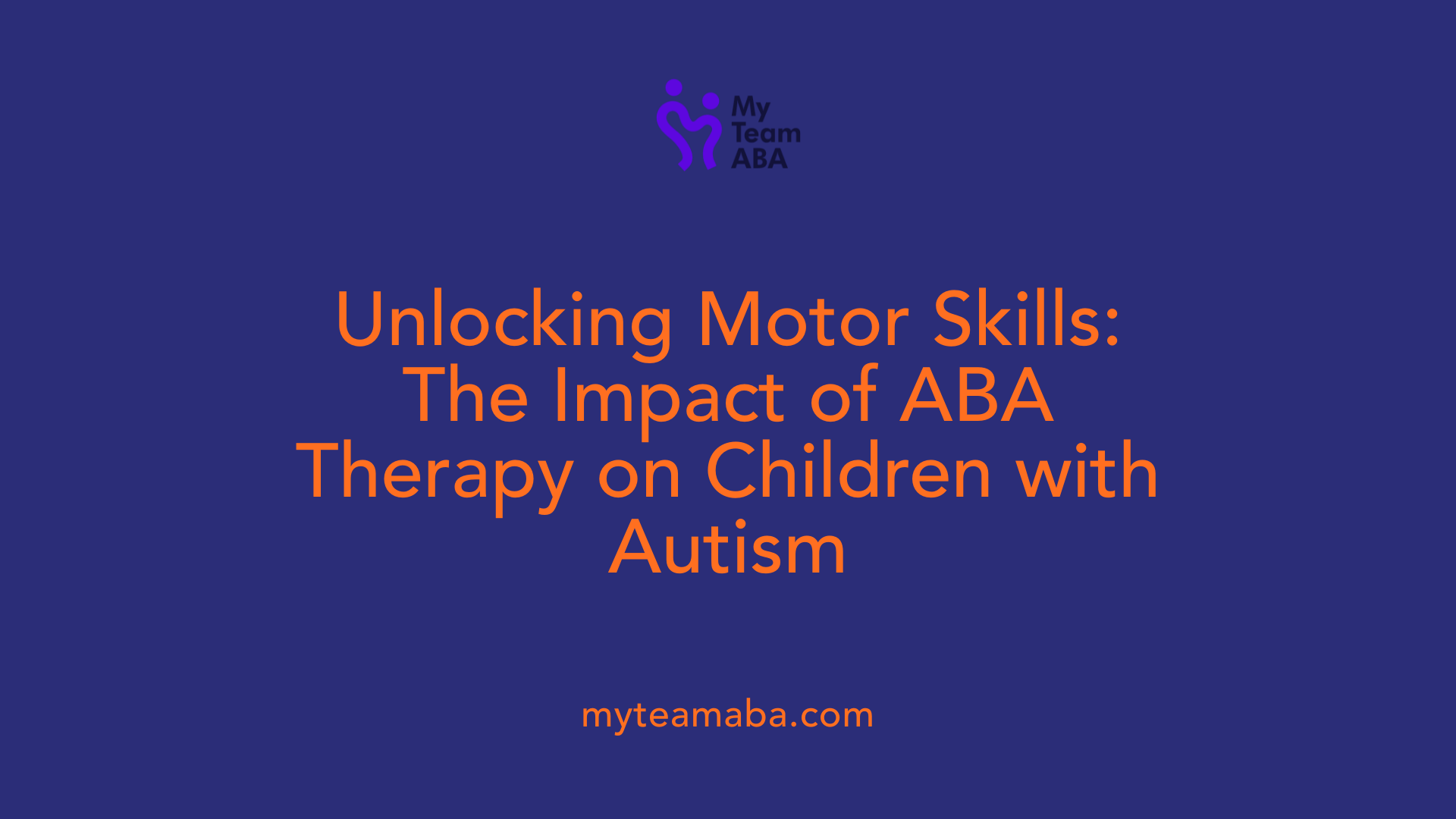
What are the benefits of ABA therapy on fine and gross motor skills in children with autism?
ABA therapy offers numerous advantages for enhancing both fine and gross motor skills in children with autism. This therapeutic approach employs a structured method that breaks down complex motor skill tasks into smaller, manageable steps. By providing this gradual learning process, children can progressively build their skills in a way that is tailored to their individual needs and abilities.
Positive reinforcement plays a critical role in ABA therapy, encouraging children to practice and improve their motor skills in real-life contexts. As children master these skills, they become more adept at performing essential daily activities such as dressing, brushing their teeth, and manipulating objects like scissors and utensils.
Research has shown that approximately 90% of children engaged in focused ABA interventions demonstrate significant improvements in their motor abilities. This progress is vital for fostering both fine motor skills—which involve precise, coordinated movements—and gross motor skills, essential for larger movements like jumping and running. The development in these areas not only equips children with vital skills for independence but also boosts their confidence and social interactions, enabling them to navigate their environments more effectively.
Incorporating engaging activities, such as beading and playdough manipulation, greatly enhances grip strength and hand-eye coordination. This makes everyday tasks feel more achievable and enjoyable.
The Role of ABA Therapy in Fostering Independence
Improving fine and gross motor skills is crucial for children with autism as it lays the foundation for greater independence in daily living activities. Enhanced motor abilities allow children to participate more fully in their own care routines, like getting dressed and grooming, promoting a sense of self-sufficiency.
The consistency of practice and the involvement of caregivers in therapy activities further enhance developmental outcomes. By integrating motor skill practice into daily tasks, parents can help reinforce what children learn in therapy sessions. This active participation not only reduces stress for both the caregiver and child but also builds a stronger parent-child bond.
Through ABA therapy, children gain essential skills for life, laying the groundwork for improved academic performance and social experiences, ultimately leading to a brighter, more independent future.
Mechanisms of ABA Therapy in Enhancing Motor Skills
How does ABA therapy operate to enhance motor skills in children?
ABA therapy enhances motor skills in children through a variety of structured techniques. One prominent method is positive reinforcement, where rewarding desired behaviors encourages their repetition. This motivational strategy builds confidence and keeps children engaged in the learning process.
Another effective technique is Discrete Trial Training (DTT), which breaks down complex motor tasks into smaller, manageable steps. This method provides clear instructions and immediate feedback, allowing children to grasp finer details progressively.
Task analysis is crucial as well—it segments complex movements into smaller, more achievable actions, thereby promoting independence. Children learn to recognize these steps individually before attempting the complete task, such as buttoning a shirt or using scissors.
To further support learning, modeling and prompting are employed. By demonstrating actions and providing assistance, children gradually learn to perform tasks independently, fostering self-sufficiency.
ABA also includes Natural Environment Training (NET), where children apply learned skills in their daily lives. This ensures that motor skills generalize across various settings, making the learning experience more relevant and impactful.
Finally, integrating ABA with Occupational Therapy (OT) can significantly enhance skill development. This combination leverages behavioral strategies alongside practical activities, ensuring that children not only learn but also apply their motor skills effectively in real-world scenarios.
Through these structured methods, children with Autism Spectrum Disorder (ASD) can experience notable improvements in both their fine and gross motor skills.
The Synergy Between ABA and Occupational Therapy
What are the principles of ABA therapy and how does it interact with Occupational Therapy to support motor skill development?
ABA therapy is structured around foundational principles such as positive reinforcement, task analysis, and data-driven approaches. These principles aim to enhance behavior, communication, and social skills in children with Autism Spectrum Disorder (ASD). One of the primary focuses is developing motor skills, both fine and gross, through repeated practice and refinement.
When paired with Occupational Therapy (OT), which emphasizes improving motor functions, sensory processing, and daily living skills, ABA creates a powerful synergy. Together, these therapies can effectively address various skill deficits that children with autism might face. OT focuses on activities that improve hand strength and coordination, essential for tasks like writing and self-care, while ABA reinforces these skills through structured, behaviorally-focused interventions.
Collaboration between Board Certified Behavior Analysts (BCBAs) and occupational therapists is crucial in this integrated approach. By working together, they can tailor strategies that meet the unique needs of each child, ensuring that both behavioral goals and motor skill development are prioritized. This interdisciplinary teamwork not only enhances the child’s overall engagement in daily activities but also fosters greater independence.
Furthermore, the combined efforts of ABA and OT contribute significantly to a child’s confidence and social interactions. Improved motor skills, spurred by these synergistic therapies, pave the way for easier participation in school and social environments, thus enriching the child’s development across multiple dimensions.
Key Strategies and Activities in ABA Therapy for Motor Skills
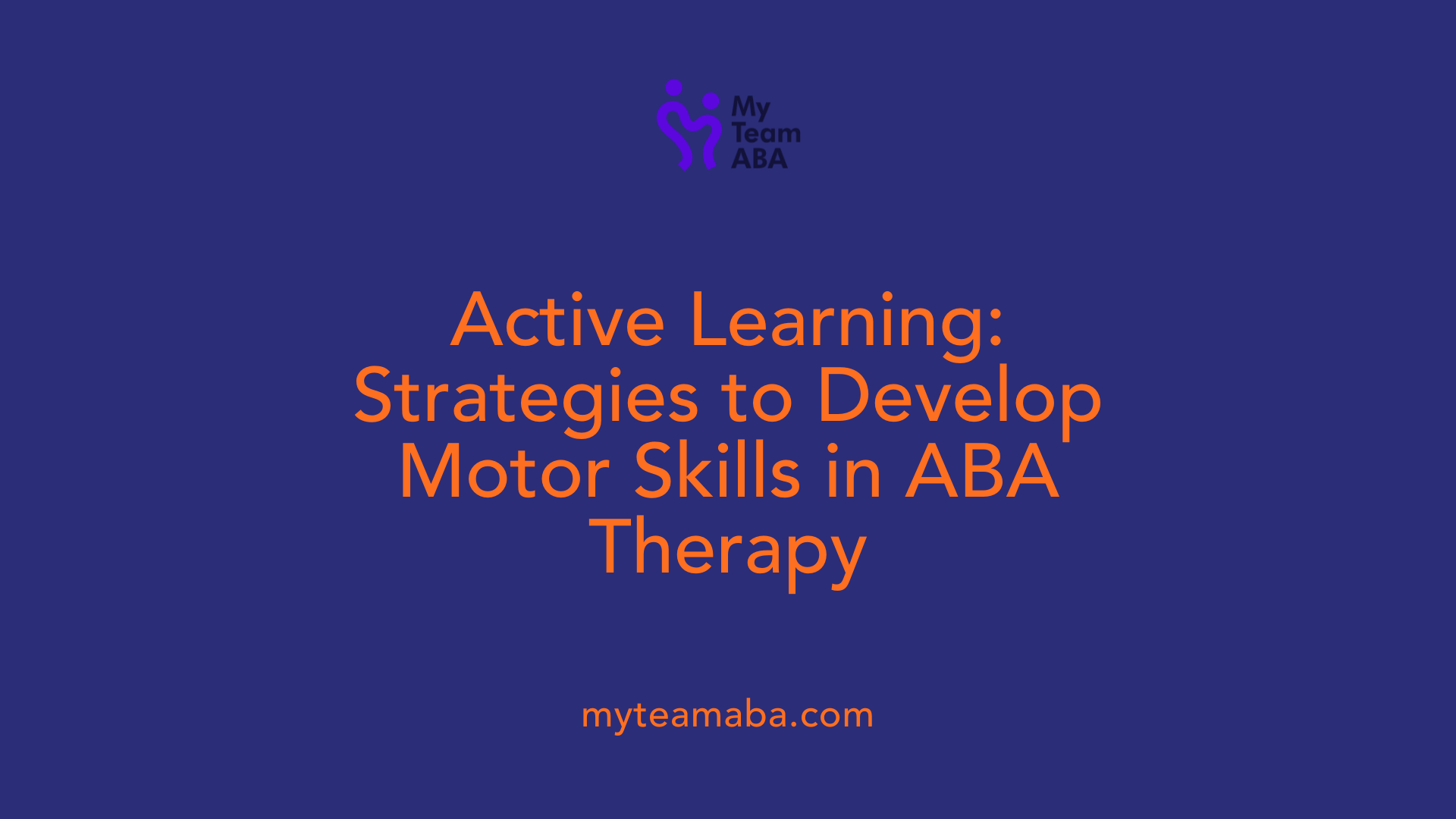
What strategies and activities are used to support motor skills development in autistic children through ABA therapy?
ABA therapy employs a variety of tailored strategies to enhance motor skills among children with autism. One effective approach is modeling movements, where therapists demonstrate tasks for children to imitate. This visual learning method is combined with physical and visual prompts to provide additional support.
Complex tasks are broken down into smaller, manageable steps, making it easier for children to learn and master each component before integrating them into the overall skill. This structured progression is beneficial not only for fine motor skills but also for gross motor development.
Effective fine motor activities include:
- Sorting games: These promote hand coordination and decision-making skills.
- Drawing: Enhances grip strength and coordination with tools.
- Threading beads: Improves dexterity and focus.
- Manipulating playdough: Strengthens fingers and encourages creative expression.
To foster engagement, these activities are often linked to the child’s personal interests and sensory preferences. Incorporating elements of play ensures that learning remains enjoyable and motivating.
In addition, developing core stability through activities like yoga or using gym balls supports overall motor skills by enhancing balance and coordination. Collaboration with parents and professionals is vital, as it allows for a comprehensive understanding of individual needs, leading to structured environments conducive to skill development.
Integrating ABA with Physical Therapy Approaches
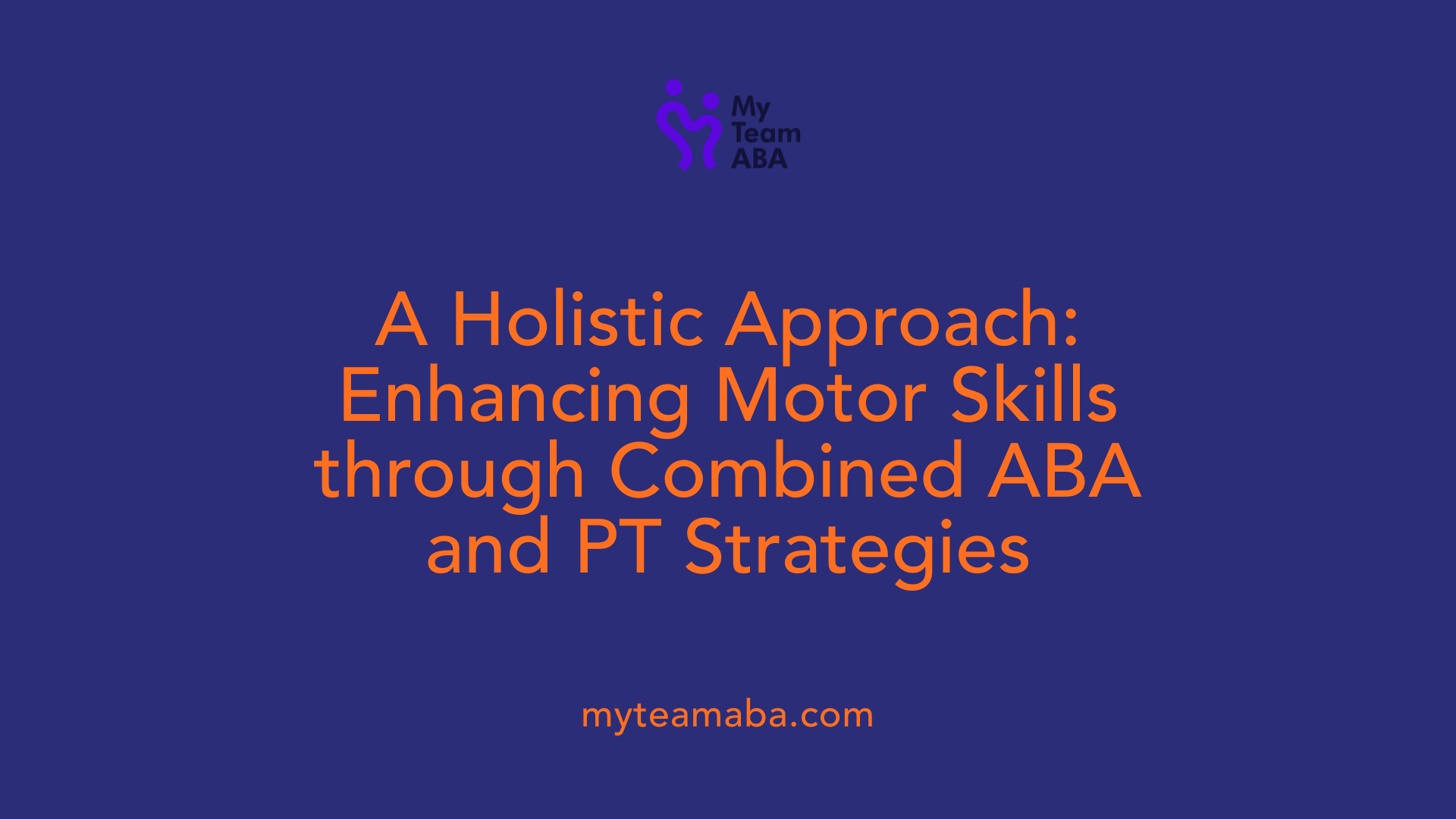
How effective is ABA therapy in enhancing motor skills in children with autism?
ABA therapy stands out as a highly effective method for improving motor skills in children with autism. Focused on behavior modification and skill acquisition, it employs a tailored approach that breaks down complex tasks into manageable steps. This technique empowers children to develop fine motor skills crucial for everyday tasks such as holding a pencil and using scissors, as well as gross motor skills involved in jumping and running.
Research indicates that 90% of children involved in targeted ABA interventions show significant progress. Engaging activities, such as manipulating playdough or beading, foster the development of grip strength, coordination, and hand-eye coordination. Parents play a key role in this process by integrating fine motor skill practice into daily activities, enhancing developmental outcomes while reducing stress for both the child and themselves.
How can ABA therapy be integrated with physical therapy approaches?
Integrating ABA therapy with physical therapy (PT) creates a comprehensive strategy to address both behavioral and physical needs. While ABA focuses on behavior and skill acquisition, PT specifically targets motor challenges, facilitating improvements in gross and fine motor skills, coordination, balance, and strength.
Techniques such as Neurodevelopmental Treatment and Sensory Integration Therapy within PT can enhance motor functions and self-care routines, making the physical development process smoother. Collaboration among therapists, families, and schools is crucial; aligning therapy goals ensures that children receive consistent support across different environments.
When ABA is combined with PT, the result is a holistic developmental strategy that fosters independence, confidence, and improved participation in daily life for children with autism.
Techniques for Caregiver Implementation of ABA Programs
What techniques are used in ABA therapy to improve motor skills, and how can caregivers implement these strategies at home?
ABA therapy utilizes several effective techniques aimed at enhancing motor skills in children with autism. These include:
- Positive Reinforcement: Rewarding desired behaviors to increase their frequency. For instance, providing praise or small rewards when a child successfully completes a fine motor task like buttoning a shirt.
- Modeling: Demonstrating the desired behavior for the child to imitate, making it easier for them to learn new skills through observation.
- Gradual Task Modification: Breaking down complex tasks into manageable steps allows children to master each step effectively before progressing.
To implement these strategies at home, caregivers can:
- Create a Structured Environment: Organize the space to minimize distractions and set up specific areas for practicing fine and gross motor skills.
- Practice Motor Tasks Consistently: Engage in daily activities that require fine motor skills, such as playing with playdough, drawing, or using scissors.
- Use Rewards or Praise: Reinforce progress by celebrating small achievements, which builds the child’s confidence and motivation.
Collaboration with a board-certified behavior analyst (BCBA) is crucial for tracking each child's progress and adjusting strategies as needed. Additionally, integrating ABA therapy with occupational therapy can further enrich motor skill development, enhancing children’s overall independence and daily living activities.
Dexterity: Building Fine Motor Skills Through ABA
Fine Motor Skill Development
Fine motor skills play a pivotal role in a child’s daily life, particularly for those with autism. These skills encompass small, precise movements required for tasks like writing, buttoning shirts, and holding utensils. For children with autism, mastering these skills is essential for fostering independence and confidence in their abilities.
ABA therapy adopts a structured approach to enhance fine motor skills. By breaking down complex tasks into manageable steps, children learn systematically and effectively. Engaging activities such as playdough manipulation, beading, and similar exercises focus on improving grip strength, coordination, and hand-eye coordination. These practices not only enhance dexterity but also provide children with sensory experiences that promote comfort and enthusiasm.
ABA Exercises for Dexterity
Tailored strategies in ABA therapy are designed to address specific fine motor challenges in children with autism. Common exercises include:
- Manipulative play: Using toys that encourage the use of fingers and hands, like puzzles and building blocks
- Art projects: Activities such as painting or drawing that promote creativity while enhancing dexterity
- Daily living skills practice: Integrating motor skills practice into routines like brushing teeth or dressing
Research indicates that active participation from caregivers enhances the effectiveness of these interventions. Engaging parents in their child’s practice not only enriches the therapy experience but also contributes significantly to developmental outcomes. By fostering an environment of support and practice, children with autism can see meaningful improvements in their fine motor skills.
Physical Play: Improving Gross Motor Skills with ABA
Gross Motor Skills Improvement
Gross motor skills are essential for children with autism, as they encompass larger movements such as walking, running, jumping, and climbing. ABA therapy plays a pivotal role in enhancing these skills by employing structured, engaging activities that encourage physical exploration. As children practice these movements, they not only develop the necessary coordination and strength but also build confidence in their physical abilities.
Physical Activities in ABA Sessions
During ABA sessions, various physical activities are utilized to promote gross motor development. Activities such as obstacle courses, ball games, and jumping exercises allow children to practice and refine their gross motor skills in a supportive and controlled environment.
Here are some common physical activities incorporated in ABA therapy:
| Activity Type | Description | Benefits |
|---|---|---|
| Obstacle courses | Sequence of challenges requiring jumping and climbing | Enhances coordination and agility |
| Ball games | Catching, throwing, and kicking activities | Improves hand-eye coordination |
| Dance or movement | Engaging in rhythmic movements | Encourages expression and fun |
| Relay races | Team-based physical tasks | Builds teamwork and social skills |
These activities not only cultivate gross motor skills but also foster social interaction, facilitating better peer relationships and reducing feelings of social withdrawal. As children participate in physical play, they experience greater independence, equipping them with the confidence needed to interact effectively with their environment.
Engagement and Motivation: Crucial Elements in ABA Therapy
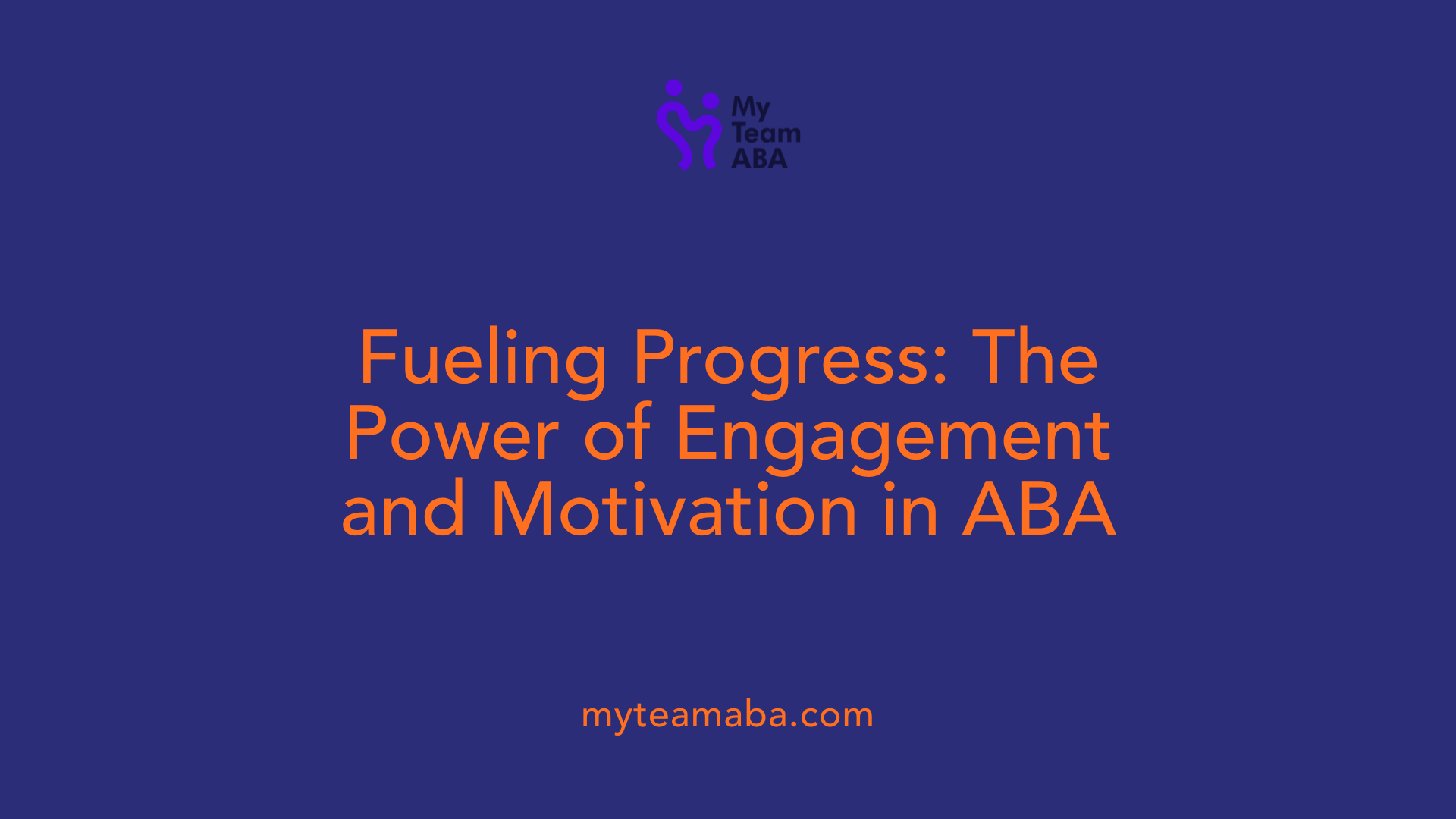
Engagement Strategies
Effective engagement is pivotal in ABA therapy, particularly for children with autism. Therapists often utilize play-based methods that hold the child's interest. Activities like playdough manipulation or beading are not just fun—they also provide opportunities to practice essential fine motor skills. By creating an enjoyable environment, therapists can encourage participation, which is crucial for learning.
Additionally, incorporating the child’s interests into sessions can boost motivation. For instance, if a child enjoys dinosaurs, using dinosaur-themed activities can enhance their willingness to engage, effectively merging fun with skill development.
Motivation in Autism Therapies
Motivation plays a key role in the developmental progress of children undergoing ABA therapy. Positive reinforcement strategies, such as verbal praise or tangible rewards, are often employed to encourage desired behaviors and skill mastery. Children are more likely to participate and learn when they recognize that their efforts will lead to rewarding experiences.
Moreover, setting achievable goals tailored to each child's abilities fosters a sense of success. This progressive approach builds confidence and encourages ongoing participation, contributing to improved outcomes in both fine and gross motor skills.
Overall Effectiveness of Engagement and Motivation
In summary, the combination of engaging activities and a focus on motivation forms a solid foundation for successful interventions in ABA therapy. By emphasizing these aspects, therapists can better facilitate skill acquisition and foster a supportive environment for children with autism.
The Role of Parent Involvement in ABA Success
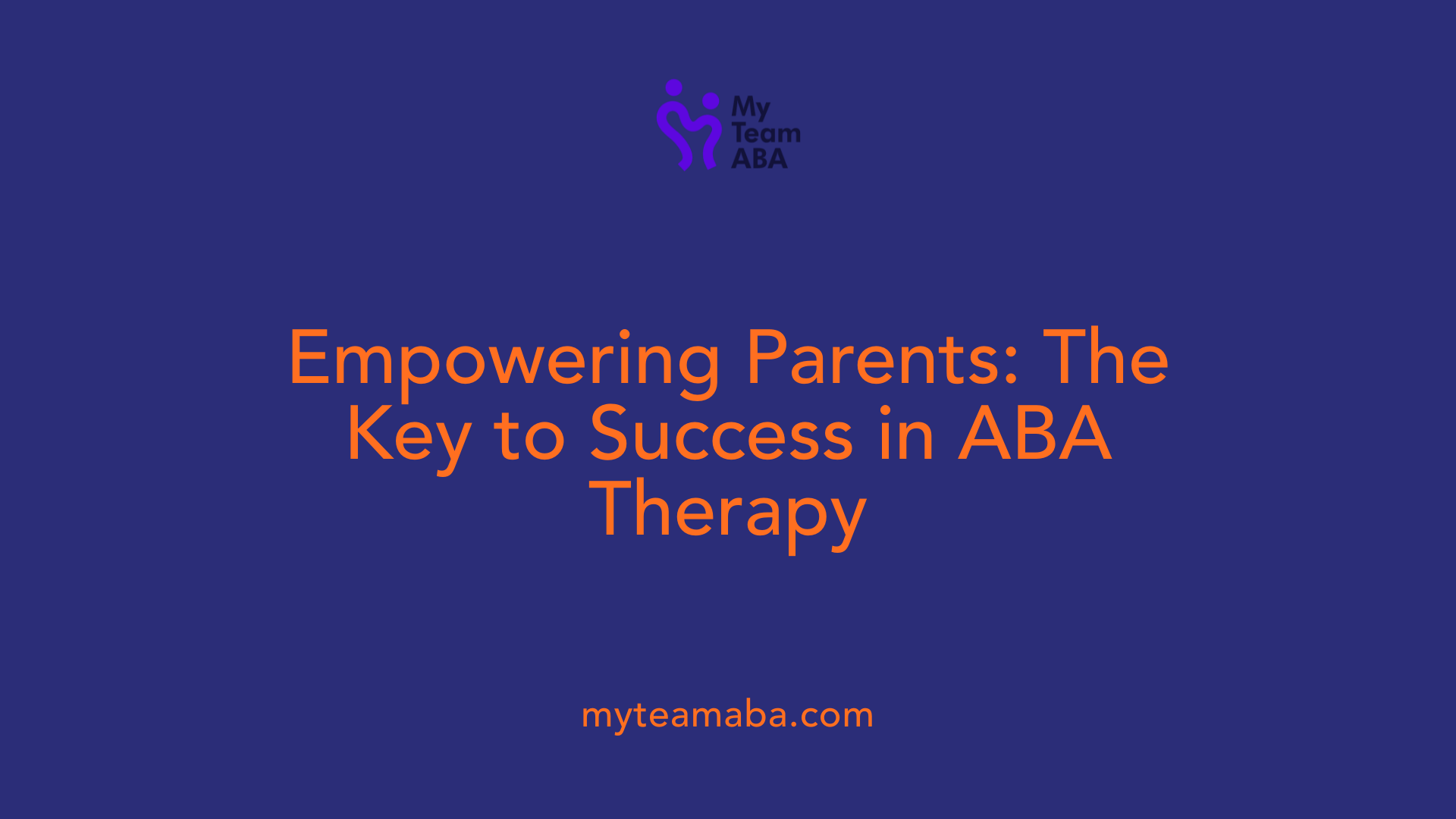
Parent Participation
Parent involvement in ABA therapy is critical for enhancing fine and gross motor skills in children with autism. When parents actively engage in the therapy process, incorporating techniques into daily routines, children experience more consistent practice. This engagement can range from simple exercises, like practicing buttoning clothes or using utensils, to more structured activities led by therapists.
Impact on Developmental Outcomes
Research highlights that active parent participation contributes significantly to the children’s developmental progress. Studies indicate that about 90% of children benefit from targeted ABA interventions, showing marked improvements in their abilities. Parents help reduce stress and create a supportive environment that promotes independence and confidence, enabling their children to navigate daily tasks more effectively.
Through consistent collaboration, parents can reinforce skills learned in therapy, ensuring lasting improvements in their child's motor abilities.
Developing Life Skills Beyond the Therapy Room
Independence
Developing motor skills in children with autism is essential for fostering independence. Enhanced fine motor skills, like buttoning clothes or holding utensils, empower children to engage in daily activities confidently. ABA therapy focuses on practical, everyday applications, ensuring that children can perform these tasks independently.
Daily Living Skills
The integration of ABA therapy with occupational and physical therapy offers a holistic reach to daily living skills. Through engaging and structured activities, children improve their abilities in tasks like brushing their teeth or dressing themselves. This collaboration helps bridge therapy practices with real-world applications, promoting smooth transitions between therapy sessions and everyday life.
Importance of Consistent Practice
Consistency matters in skills development. Activities that integrate fine motor use, such as playing with playdough or threading beads, not only foster skill acquisition but also make exercises engaging for children. As a result, children can transfer these skills to everyday situations, enhancing their autonomy.
| Skill Type | Therapy Focus | Impact on Independence |
|---|---|---|
| Fine Motor Skills | ABA, OT | Improves daily tasks like dressing, eating |
| Gross Motor Skills | ABA, PT | Enhances physical confidence in social settings |
The caring support from parents and therapists further strengthens the development process, allowing for a natural incorporation of skills into daily routines.
Conclusion: The Transformative Power of ABA Therapy
ABA therapy, with its structured approach and focus on skill breakdown, provides actionable strategies for enhancing fine and gross motor skills in children with autism. By integrating with occupational and physical therapies and involving caregivers, ABA not only targets specific skill development but also fosters a sense of independence and self-esteem. This multifaceted approach promises a brighter, more empowered future for children as they learn and grow, equipped with the necessary tools to navigate the complexities of daily life.
References
- 5 Behaviors & Skills That ABA Can Help With - Circle Care Services
- 5 Skills Children Will Improve With ABA Therapy
- When to Combine Occupational Therapy and ABA for Children
- Physical Therapy for Autism: What Parents Need to Know - Blue ABA
- How to Enhance Motor Actions in Children with ABA Therapy
- Applied Behavior Analysis (ABA) | Autism Speaks
- Benefits of ABA Therapy for Children with Autism
- 6 Life-Changing Benefits of ABA Therapy for Children with Autism
- The 10 Best Techniques Used In ABA Therapy? - The Play Base
- Applied Behavior Analysis (ABA) | Autism Speaks
